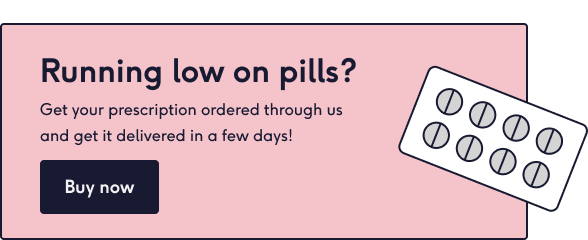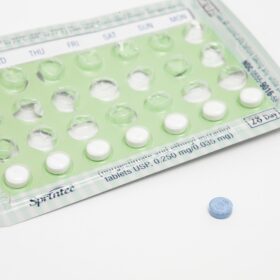
What is Levonorgestrel?
In this article
What's the lowdown?
Levonorgestrel is a form of synthetic progesterone called progestogen
It is used in hormonal contraception or the morning-after pill
Hormonal contraception containing levonorgestrel are the combined-oral contraceptive, progesterone-only pill and intrauterine system
There are different side effects experience by each type of contraceptive type
Levonorgestrel is the well-travelled aunt of the progestogen world. As one of the most commonly-used progestogens in contraception, levonorgestrel is found in combined pills, progestogen-only/mini pills (POP), the hormonal coil (IUS) and the morning after pill.
The reason levonorgestrel gets around so much is that it’s a relatively old synthetic progestin, developed when there were fewer options on the market. It belongs to the second-generation class of progestins, which were derived from testosterone.
How does Levonorgestrel work?
When taken as the morning after pill, levonorgestrel is thought to work by preventing ovulation if it hasn’t already occurred. When taken as a longer-term contraceptive orally or in an intrauterine device (hormonal coil), it can also prevent ovulation and stop sperm from getting to your uterus by thickening your cervical fluid. It can also make the lining of your womb thicker, making it trickier for a fertilised egg to implant.
How effective is Levonorgestrel?
The effectiveness of levonorgestrel is depending on quickly the morning after pill is taken after unprotected sex:
- 95% effective within 24 hours
- 85% effective between 25-48 hours
- 58% effective between 49-72 hours
What is Levonorgestrol used in?
Levonorgestrel is found in the following brands:
Combined pills
Progestogen-only pills (mini-pills)
Hormonal coil (IUS)
Morning after pill
Is Levonorgestrel androgenic?
Yes1. (Check out our ‘Androgens’ blog for more info on what this means).
Levonorgestrel side effects
Depending on how and when women take levonorgestrel, for example in the form of a combined pill where it is used in combination with oestrogen, or in the hormonal coil where it inserted into the womb, side effects can vary.
The following side effects have been noted:2 3 4
With the hormonal coil (IUS or intrauterine system)
- Changes to your periods including irregular bleeding or your periods stopping altogether
- Acne
- Headaches
- Breast tenderness
- Changes in mood
- Back pain
- Ovarian cysts
- Pelvic disorders
- Vulvovaginal disorders and infections
- Weight changes
With the COCP or POP:
- Breast tenderness and enlargement
- Headaches
- Nausea
- Mood changes
- Increase in blood pressure
As of September 2024, 32% of lowdown users who take the mini-pill experienced changes in mood, 43% stopped having periods, 50% lost their sex drive, 51% have breast tenderness, and 38% experience vaginal dryness.
For the levonorgestrel morning-after pill, 55% of lowdown users complained of nausea and vomiting, 46% of period-like cramps, 36% of irregular periods and 100% of cycle return in 1 month.
If you have used levonorgestrel either in a morning-after pill, mini-pill or combined pill, why not leave a review with us so others can learn more about your experiences.

Our medical review process
This article has been medically reviewed for factual and up to date information by a Lowdown doctor.







